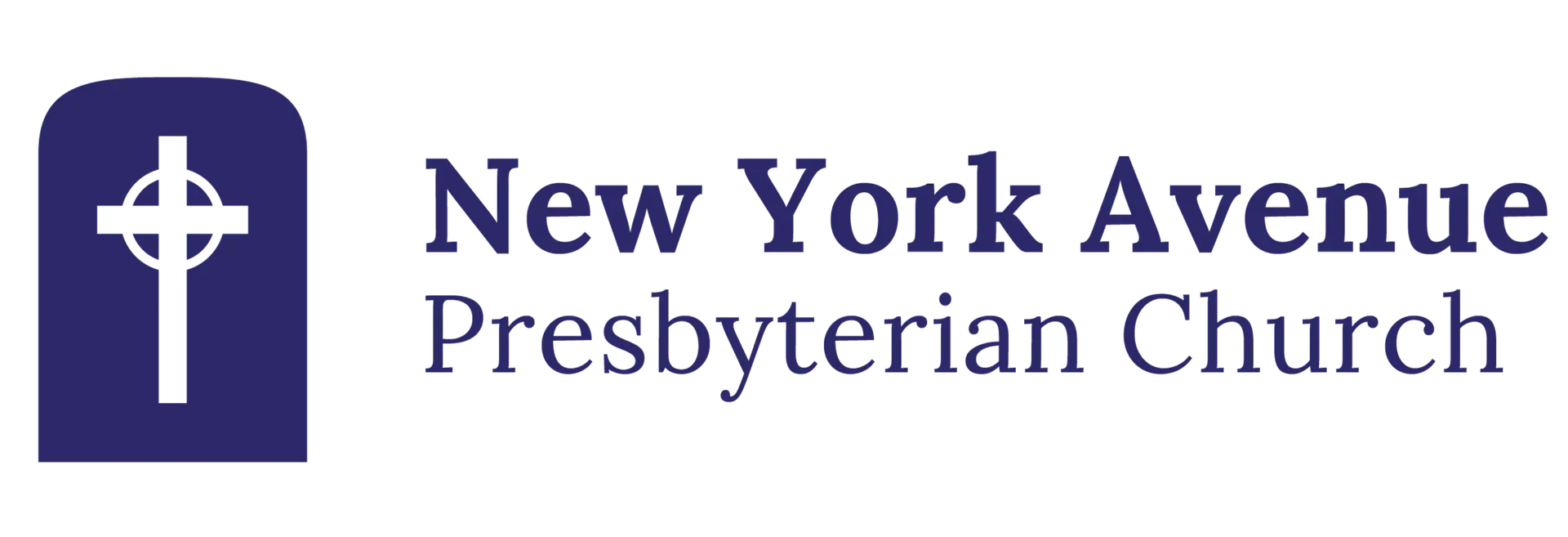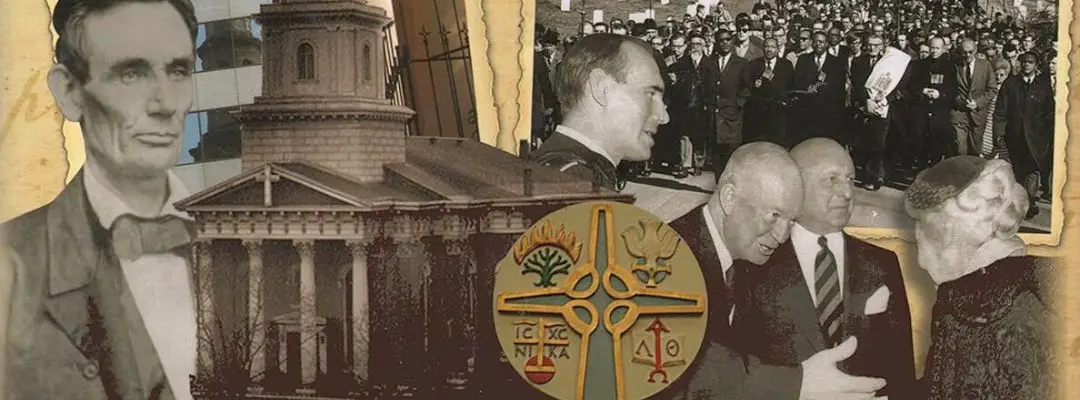
Our Story
Chronicles Of Faith and Action
The New York Avenue Presbyterian Church originated from the merger of the F Street Associate Reformed Presbyterian Church and Second Presbyterian Church in 1859. With its location just blocks from the White House, NYAPC has hosted presidents, cabinet secretaries, and members of Congress throughout its rich history. The church has been deeply involved in social justice and civil rights movements, notably during the civil rights era and anti-war protests. NYAPC’s commitment to prophetic preaching, fine music, hospitality, deep and long support for the children of Washington and for those affected by mental illness and homelessness persist, highlighting its powerful legacy and promising future.
Our Timeline
F Street Associate Reformed Presbyterian Church
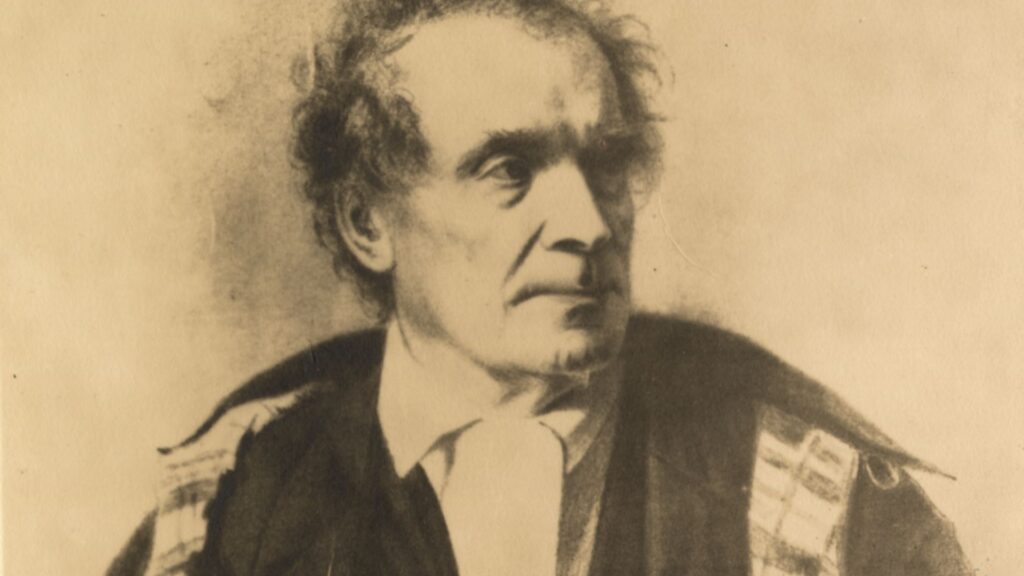
The F Street Associate Reformed (later Presbyterian) Church organized in 1803, in the shadow of the new White House. The congregation was led by Rev. Dr. James Laurie, from 1803 to 1853. Laurie was a leader in promoting racial equality in education and was a founding officer of the American Colonization Society, a self-described effort to encourage emancipation and assist freed people to escape discrimination by emigrating to Africa.
Second Presbyterian Church
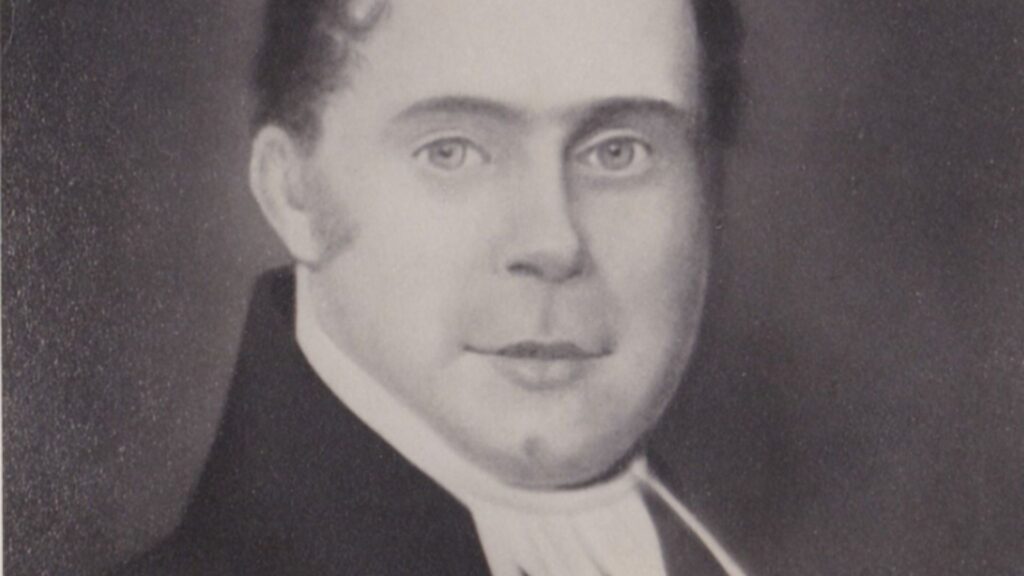
In 1820, the 2nd Presbyterian Church formed on the site where NYAPC stands today. 2nd Presbyterian drew such political luminaries of the day as John Quincy Adams, who later served as a church trustee and Andrew Jackson. Daniel Baker, its first pastor, ushers Black persons into church membership before leaving in 1828 to serve congregations in the South and Southwest where his preaching drew many to the Presbyterian Church. Black members of 2nd Presbyterian chose to leave in 1840 to form 15th Street Presbyterian Church, the first African American Presbyterian congregation in the Nation’s Capital.
1820- 1859New York Avenue Presbyterian Church
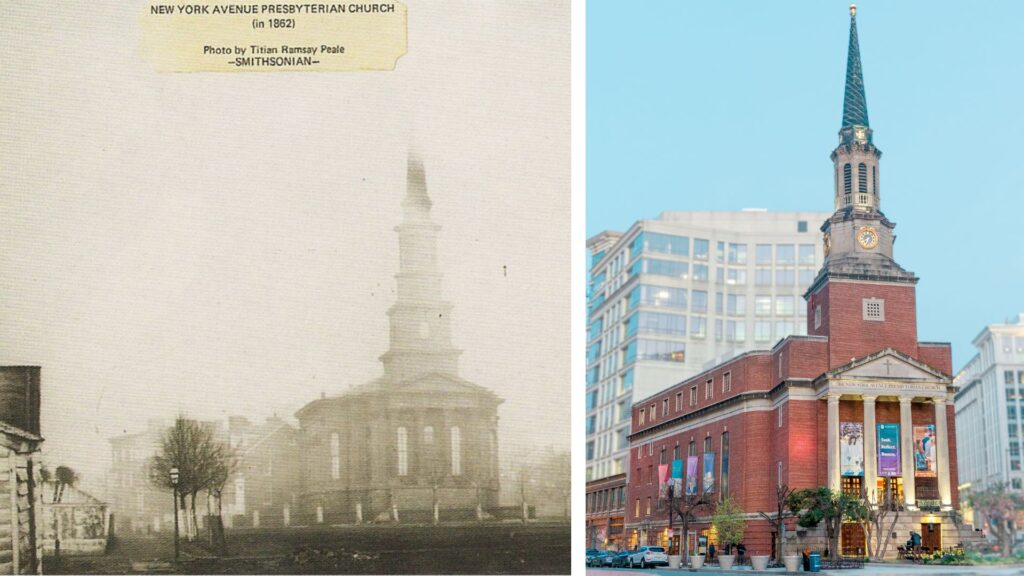
Rev. Dr. Phineas Gurley, then pastor of F Street, led the merger of the F Street church with the 2nd Presbyterian Church. A new church building opened in 1860 on the site the current church occupies. The congregation assumed the nae of its location, the New York
Avenue Presbyterian Church. By 1949 church membership grew to over 2,000 attracted by the ministries of the Rev. Dr. Joseph Sizoo and the Rev. Dr. Peter Marshall, testing the capacity of the old building. Reluctantly but with great hope for the future, the church leadership decided to replace the 1859 edifice with a new building on the same site rather than moving to the burgeoning suburbs.
Phineas Gurley and President Lincoln
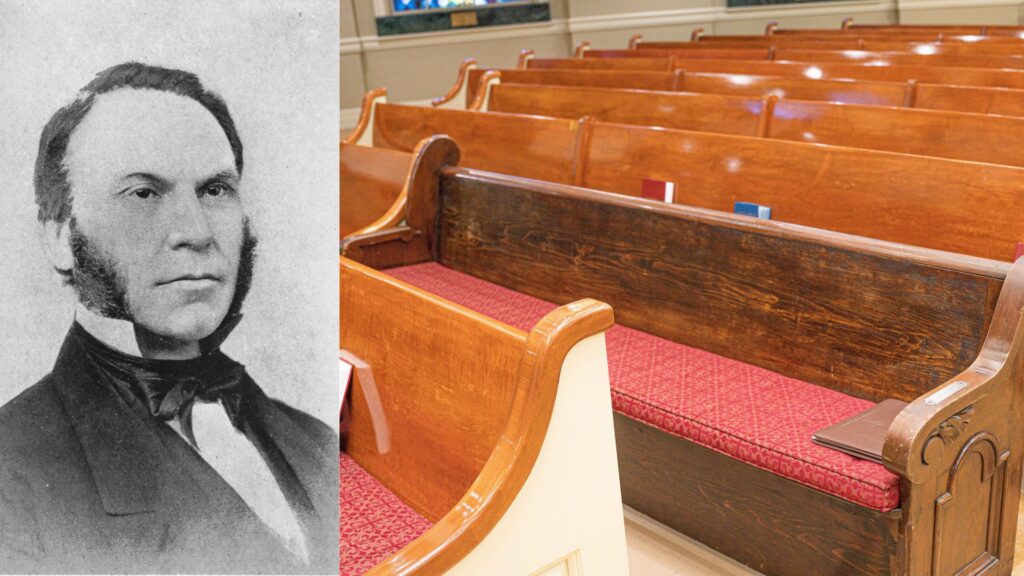
President Lincoln attended his first service at NYAPC in March 1861 and soon after the Lincoln family rented a pew and regularly attend Sunday worship and mid-week evening prayer sessions. As the Civil War raged on, the President appreciated that Phineas Gurley “did not preach politics from the pulpit” even as Gurley’s sermons and their frequent conversations affected Lincoln’s perception of the war and its meaning for the nation. Their growing friendship and profound conversations culminated in the Second Inaugural Address as Lincoln wrestled with understanding God’s will in the war and concludes by calling for “malice towards none and charity toward all”.
1854-1868A Family Recognition of Lincoln at NYAPC
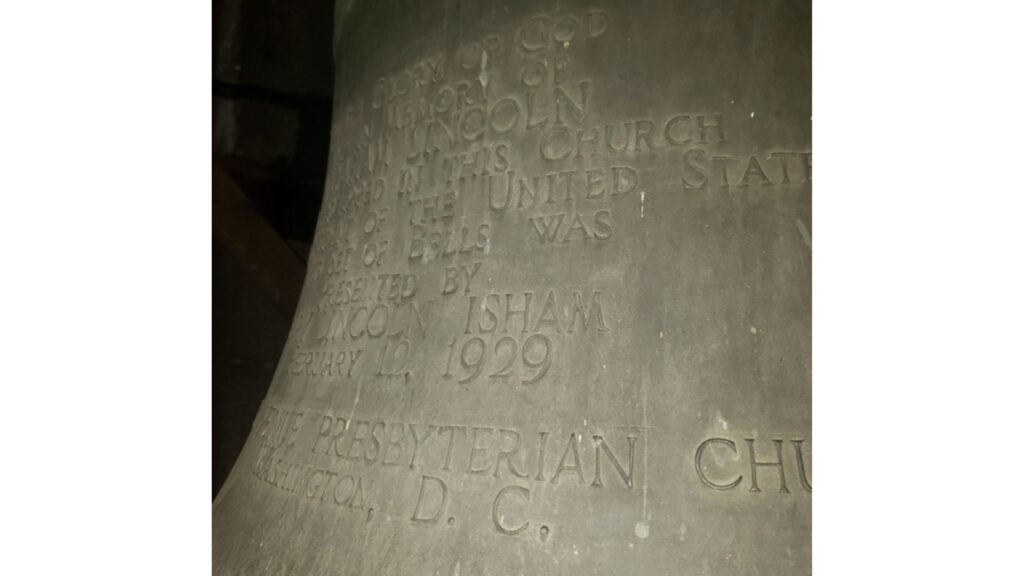
Robert Lincoln’s wife and daughter gave the bells that sound every 15 minutes from the NYAPC bell tower throughout the day. The inscription on the bells, noting that Lincoln was “a pew holder and regular attendant at the services of the church” affirms the significance of NYAPC to the President. Dedicated in 1929, the chimes are the only physical memorial for the President ever created by Lincoln’s descendants.
1929Preparing for the Emancipation Proclamation
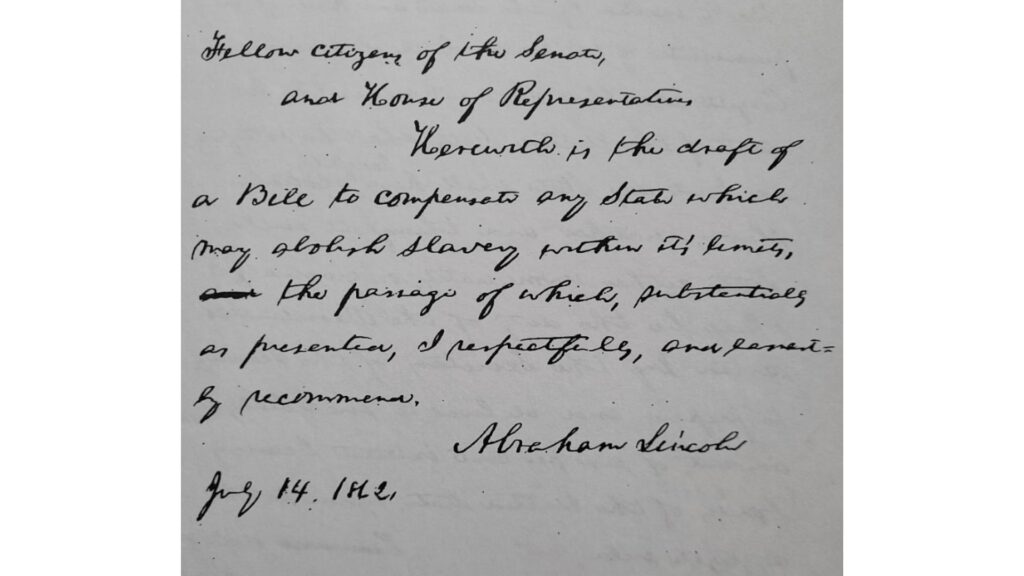
NYAPC is honored to display draft legislation, dated July 14, 1862, in Lincoln’s handwriting. Here he proposes to end the war and free the enslaved persons in the Confederate states through a compensated emancipation program like the one Congress approved for ending slavery in the District of Columbia in April 1862. The proposal was rejected by the slave holding border states and on January 1, 1863, Lincoln issued the Emancipation Proclamation Executive Order with no offer of compensation.
1862-1863Turbulent Years for the Nation’s Presbyterian Church
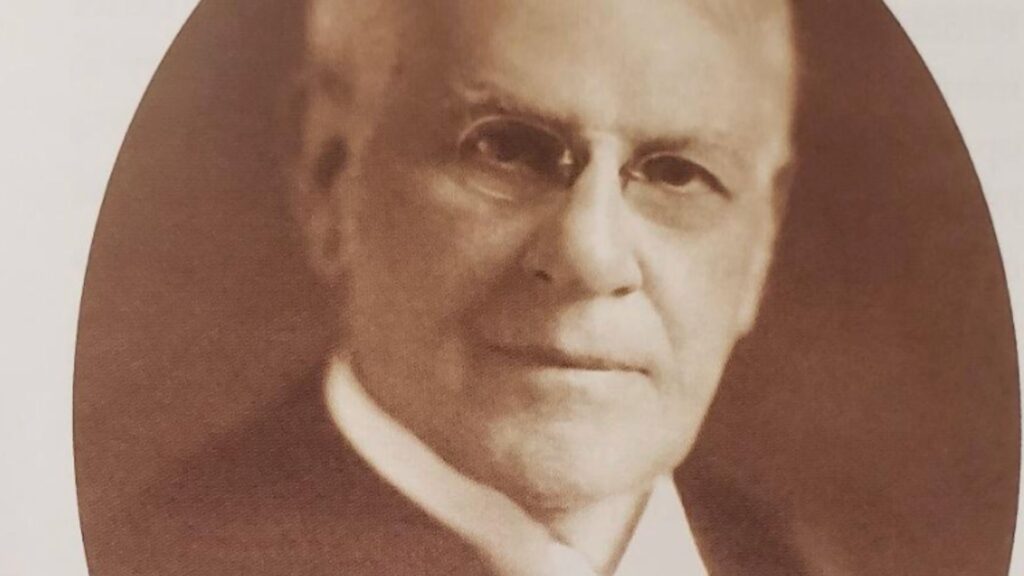
The Rev. Dr. Wallace Radcliffe led NYAPC through three turbulent decades as the Presbyterian Church in the United States grappled with developments in science and Biblical research and the rise of the Social Gospel Movement, all of which challenged traditional reading of the Biblical text. Inspired by the social gospel Radcliffe befriended William Jennings Bryan, the self-proclaimed advocate for “the common man” who ran for President three times. Radcliffe also befriended and exchanged pulpits with Francis Grimke, one of the leading African-American clergy of his time who helped found the NAACP in 1909. However, Radcliffe in his sermons maintained a traditional reading of the Bible and in his belief that America had a Christian heritage, even to the extent of opposing Mormon-dominated Utah being granted statehood.
1892-1922John Marshall Harlan: The Great Dissenter
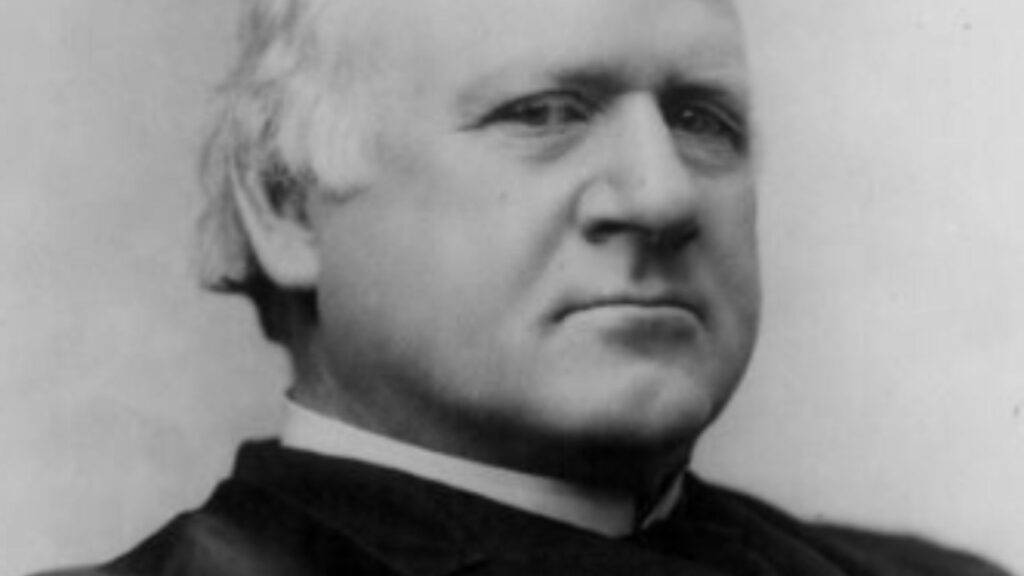
Supreme Court Justice John Marshall Harlan taught the men’s Bible study at the NYAPC for 30 years. His contemporaries proposed that he went to bed with the Bible in one hand and the Constitution in the other. Known as the great dissenter for his resistance to rulings that protected powerful corporations, he offered the lone dissent in the 1896 case of Plessy v. Ferguson when the Supreme court condoned race -based segregation. Harlan reported that, after attending a Sunday morning service at the NYAPC, he went home and wrote his dissent, “. . . our Constitution is colorblind . . . and neither knows nor tolerates classes among citizens. In respect of civil rights, all citizens are equal before the law.” Harlan's dissent inspired ultimately successful efforts to have the courts declare segregation unconstitutional, the most famous case being 1954 Brown vs Board of Education that ended court sanctioned school segregation.
1877-1911Congregational Growth: Joseph Sizoo
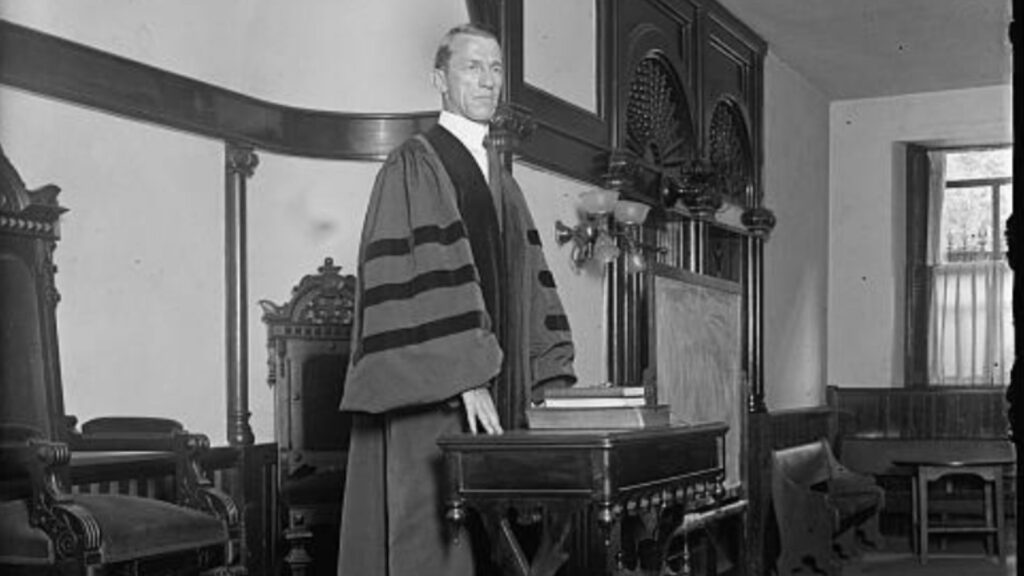
In 1924 Reverend Joseph Sizoo accepted the call to NYAPC. Sizoo’s sermons applied a more “liberal” Biblical interpretation to the contemporary problems of a nation facing economic depression, the specter of a second world war, a population losing its commitment to religious practice, and the ever-present undercurrents of racial injustice. The combination of Sizoo’s preaching, his willingness to explore new media, including the radio, and the growth of Washington itself during the New Deal contributed to growth of the New York Avenue congregation. However, the church remained largely a place for personal reflection and not a place to promote, support, or host social action.
1924-1936A Nation’s Minister: Peter Marshall
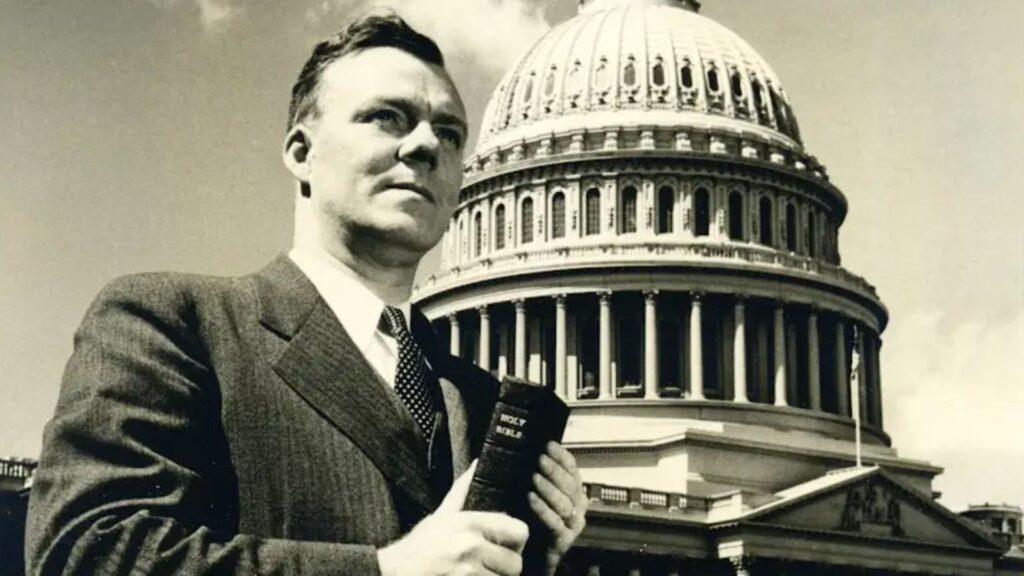
The reputation of Scottish native Peter Marshall as powerful preacher and inspiring leader spread quickly. Marshall’s commitment to hospitality meant he insisted that the church was not only a place for Sunday worship but should be a respite during the week for service men and women who needed a place to socialize, and for disadvantaged youth in the neighborhood who needed a place for recreation. In the late 1940s Marshall was appointed U.S. Senate Chaplain; during those years some of his sermons condemned the injustices of American society, as did many of his opening prayers before the Senate. However, it would be another 15 years before the congregation would envision its church as a place where people advocating for progressive public action would gather and where they would peacefully protest and witness.
1937-1949Challenging Times: George Docherty
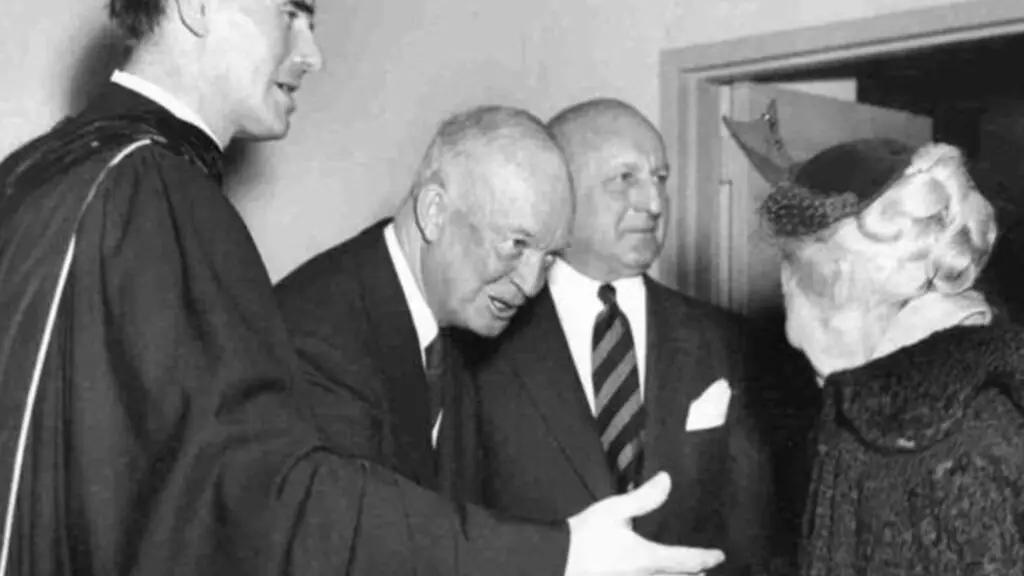
Rev. Dr. George Docherty came to Washington in 1951 and remained Senior Pastor for 25 years. Docherty offered profound and poetic sermons and imaginative leadership. It is a great irony that immigrant Docherty should attain early prominence by preaching the sermon that convinced President Eisenhower to promote adding “under God” to the pledge of Allegiance. Later in life Docherty remarked that the phase was not meant to separate atheists from believers, but instead was to acknowledge that the nation’s early leaders had a belief that divine providence and the phase does not mean “America right or wrong” -- a view he called civic religion and not prophetic religion.
1951-1976Challenging Times: Jack McClendon
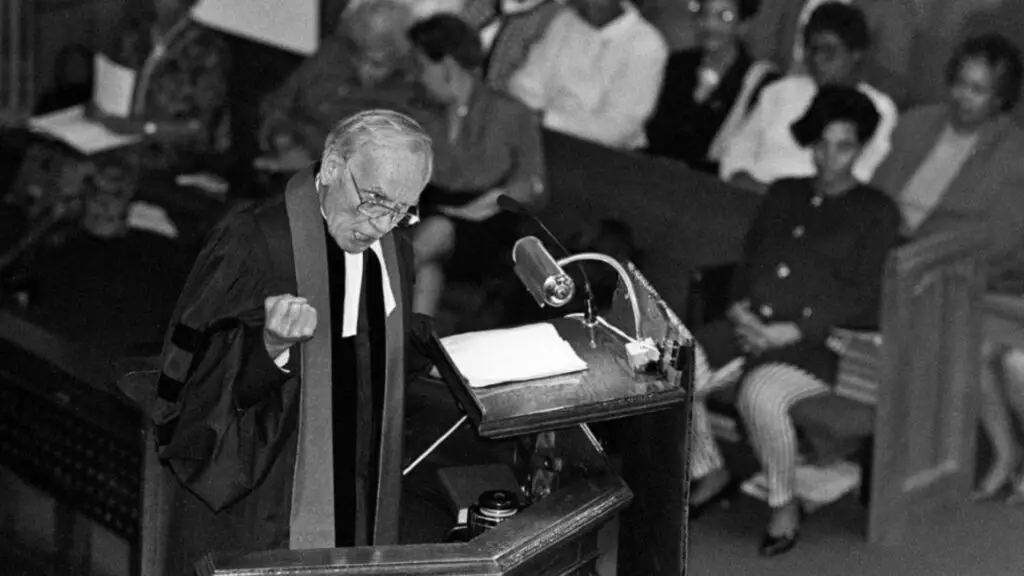
Rev. Dr. Jack McClendon, Associate Pastor from 1957 to 1991, inspired the congregation’s current foundational commitment to social justice in the city and nation. McClendon’s great friendship with George Docherty, and his dedication to nurturing the souls under his care, combined to redefine the church’s mission and to start three of our ministries that have flourished for decades.
1957-1991Challenging Times: Selma and Civil Rights
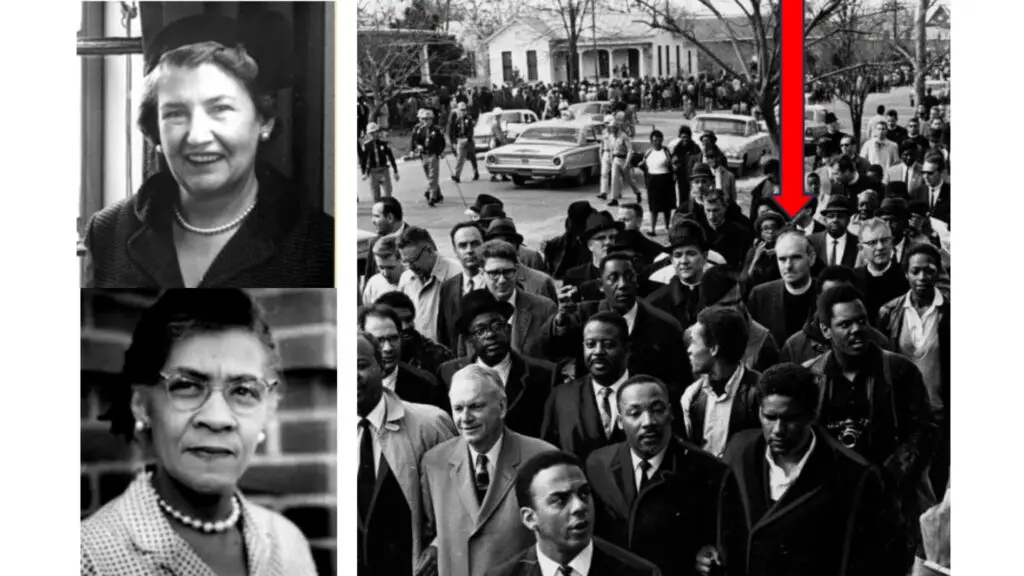
Mary Docherty, the Senior Pastor’s wife, and Thelma Odom, an African American church staff member, responded to Martin Luther King, Jr.’s call for church people to come and join the Selma Alabama voter registration drive in January 1965. Upon her return, Mary emboldened her husband to join her for a second trip in February, and Rev. Docherty and other NYAPC pastors and lay people participated in the March 1965 protest that led to the Civil Rights Act of 1965. Rev. Docherty reported back to the congregation in future sermons. In one he said, “We went to Selma, Alabama, to see some Negro folk and we found the Living Christ. We took part in a procession of Negroes protesting their right to vote and discovered we were marching in the Army of the Lord.”
1965Challenging Times: Vietnam Protest and CALCAV
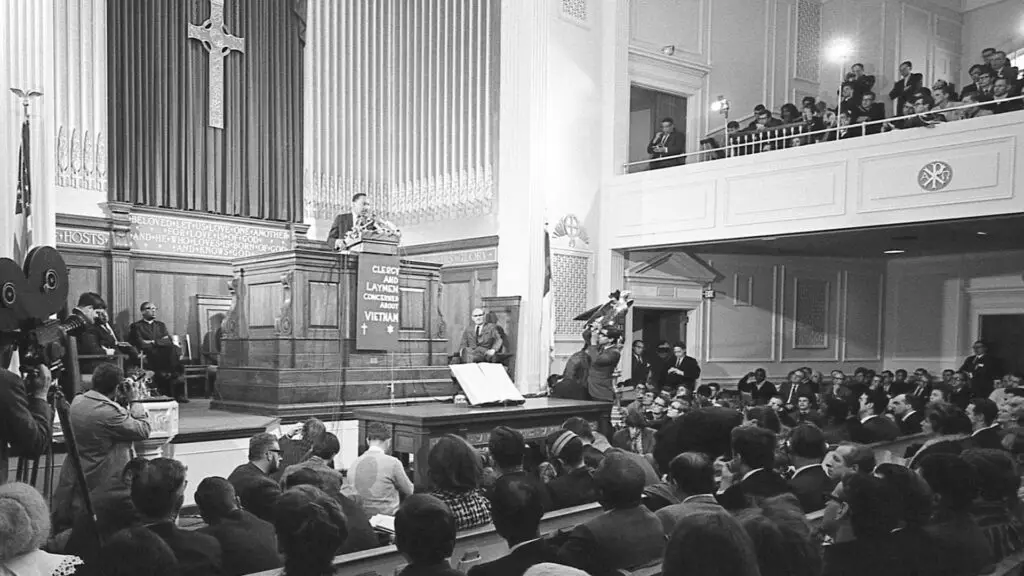
America’s religious leaders were among the first to raise their voices in opposition to the Vietnam War. NYAPC hosted the first two national convocations of Clergy and Laity Concerned about Vietnam [CALCAV]. Among the leaders for worship in our sanctuary is the Rev. Dr. Martin Luther King, Jr. The crowd proceeded from the church to the Pentagon to present their concerns to Robert McNamara, Secretary of Defense who was at that time a member of NYAPC. King asked, and Docherty agreed, to King offering a sermon at the NYAPC on Sunday March 31, 1968. Amid tensions over the war, by a close vote, the session dis-invited King. King gave the sermon elsewhere and was assassinated 4 day later – after his last sermon.
1966-1969Stained Glass Windows
 The first-floor windows in the sanctuary tell the Biblical story of faith from creation through life everlasting. The balcony windows build on that sure foundation to affirm how we live out our faith in the world. The Genesis window juxtaposes images of God’s garden and science, images which caution us against literal biblical interpretation. In another window the prophets speaking Gods’ truth to the powerful in the U.S. Capital and Kremlin. The One Nation Under God window portrays notable immigrants, African Americans, Native Americans, disabled Americans and
The first-floor windows in the sanctuary tell the Biblical story of faith from creation through life everlasting. The balcony windows build on that sure foundation to affirm how we live out our faith in the world. The Genesis window juxtaposes images of God’s garden and science, images which caution us against literal biblical interpretation. In another window the prophets speaking Gods’ truth to the powerful in the U.S. Capital and Kremlin. The One Nation Under God window portrays notable immigrants, African Americans, Native Americans, disabled Americans and
women in leadership. With God as its focus, the window shares symbols from Abrahamic and Non-Abrahamic faiths. Together the windows testify to how we believe what we believe and how we might answer the call to be and do in the world of today and tomorrow.
Challenging Times: Poor People’s Campaign
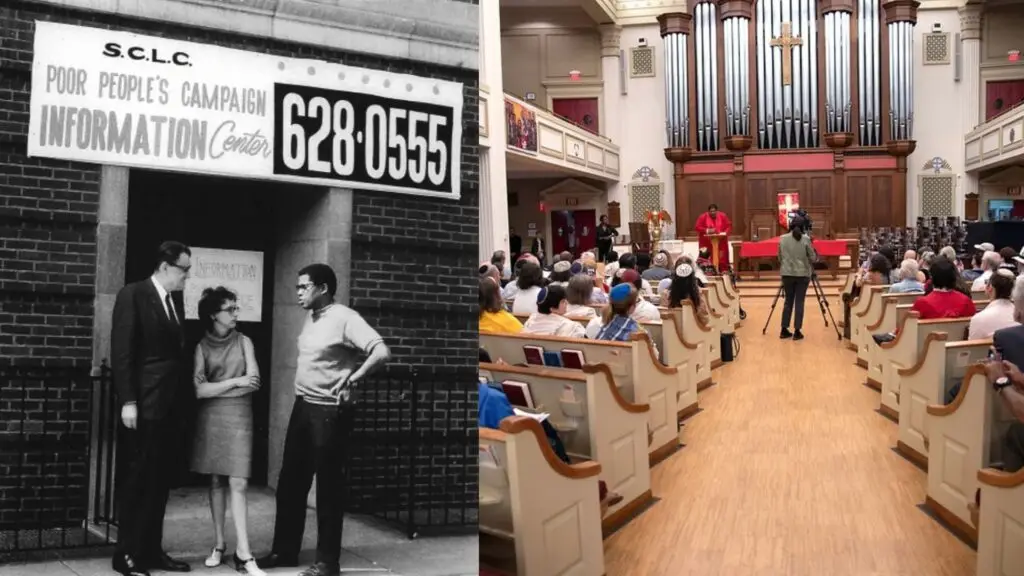
NYAPC served as the Washington Information Center and DC headquarters of the 1968 Poor People’s Campaign, the fruit of the Civil Rights Movement’s effort to wed civil rights and poverty. In that capacity, NYAPC hosted many of the leaders of that campaign, including Ralph Abernathy, Bernard Lafayette, and Andrew Young. The Rev. William Barber introduced his recent revival of the Campaign at NYAPC in 2019.
1968A Time of Change: First Female Assistant Pastor
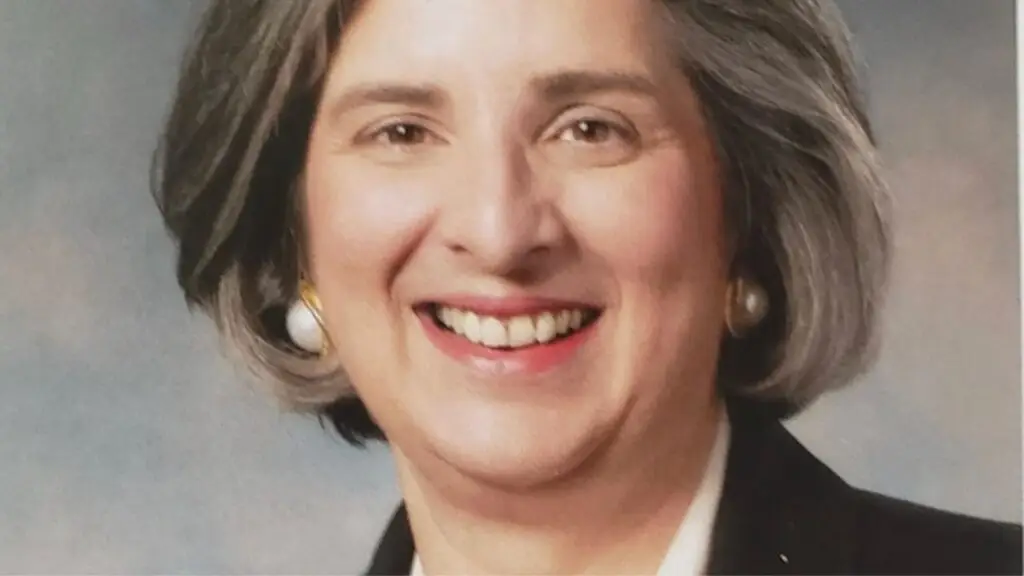
In 1979, NYAPC called its first female assistant pastor, The Rev. Rosemary C. Mitchell. New York Avenue Church has been served by a continuing line of female ordained pastors since the Mitchell pastorate.
1979Rob Craig: A Stabilizing Presence
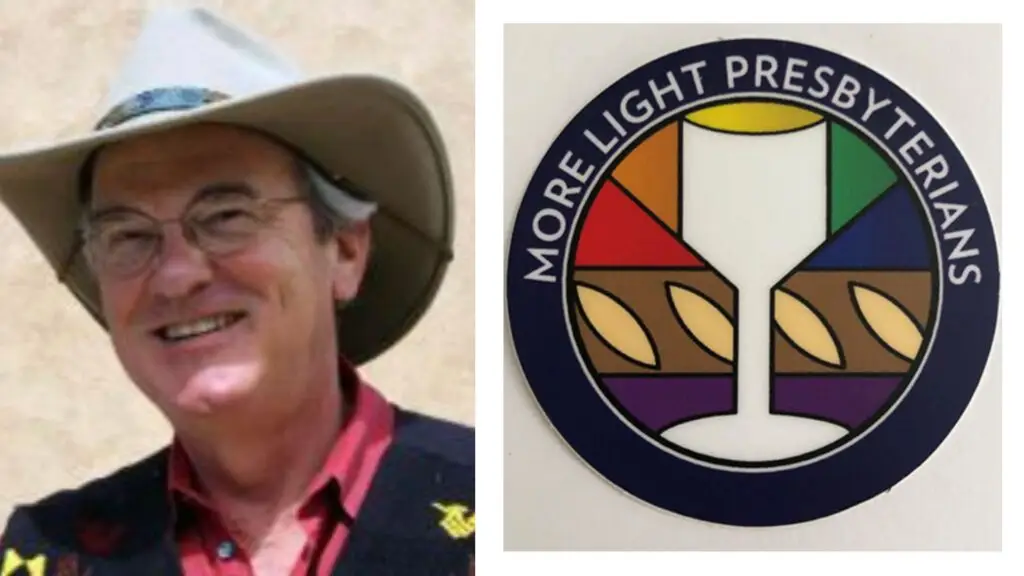
Reverend Craig’s emphasis on pastoral care, social action, cooperative leadership, and congregational healing after the previous tumultuous 25 years set the foundation for later congregational growth. He led the two-year deliberations of a Task Force on Sexuality and the Session unanimously voted to become a More Light Congregation and join the Covenant Network, thereby affirming its commitment to the LBGTQ+ community’s full membership, participation, and leadership in the NYAPC.
1990-1999Theology for Action: Roger Gench
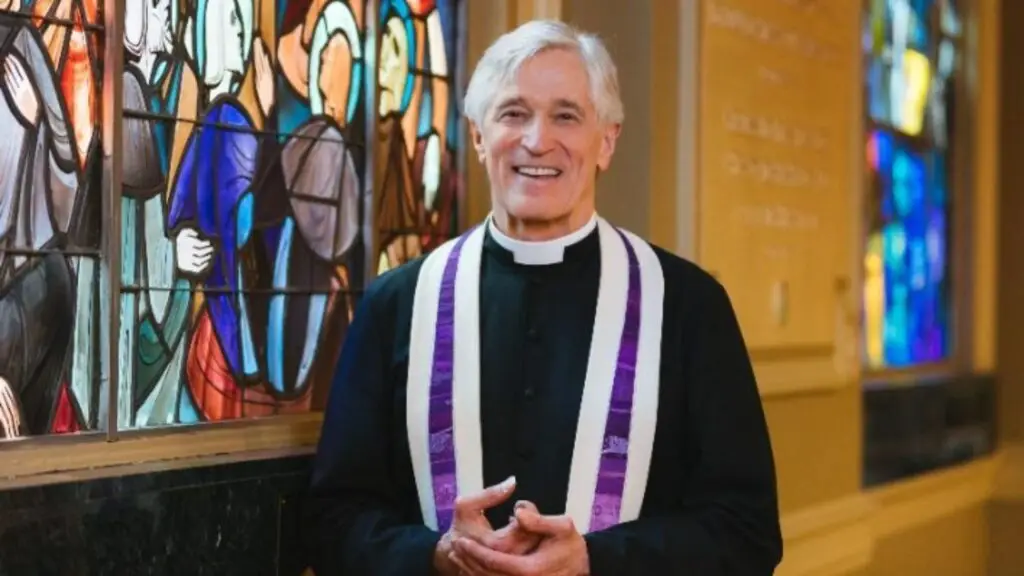
Rev. Dr. Roger Gench brought contemporary theological scholarship stressing the theology of the cross to the pews, guiding and inspiring 21st-century Christians to reflect our responsibility to the DC community and in the world. With finely crafted sermons and a gracious presence young adults and families were drawn to this downtown congregation. Rev. Dr. Gench supported the spiritual growth of the congregation in small book groups, silent retreats, and training in Ignatian spiritual practice. His keen interest in community organizing and urban ministry is captured in the title of his book, The Cross Examen: A Spirituality for Activists.
2002-2019Community Club
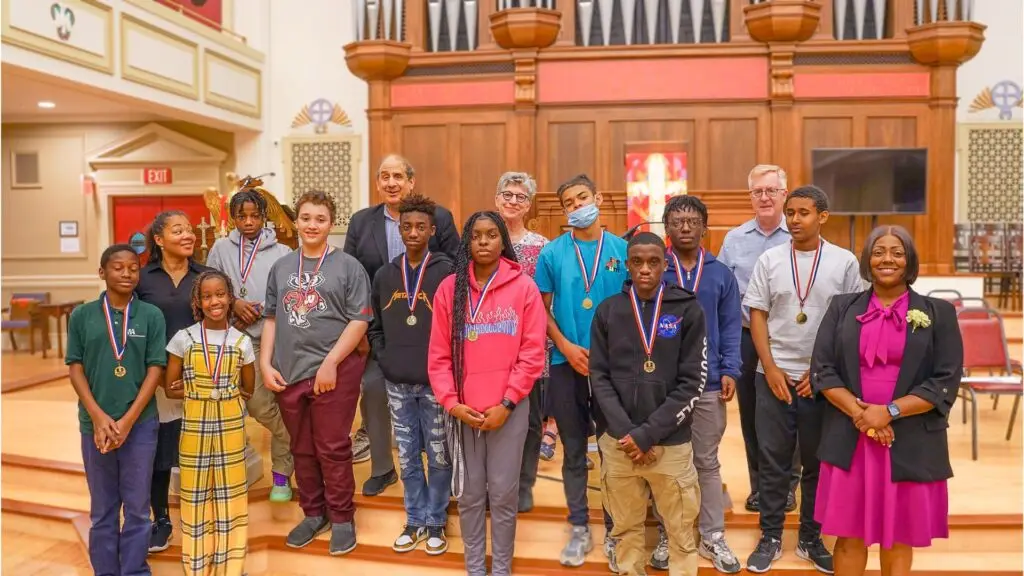
Community Club pairs students from Washington, DC public and charter schools with adult volunteers for one-on-one mentoring. The Community Club Study Hall meets every Thursday night at 7:00 P.M. during the school year, with over 100 7th-12th grade students and over 100 mentors (tutors) working on homework, longer-term school projects, and college applications. Some of the friendships generated last for lifetimes. Thousands of our students have graduated from high school and hundreds have gone on to graduate from college.
1962 - TodayRadcliffe Room Ministry
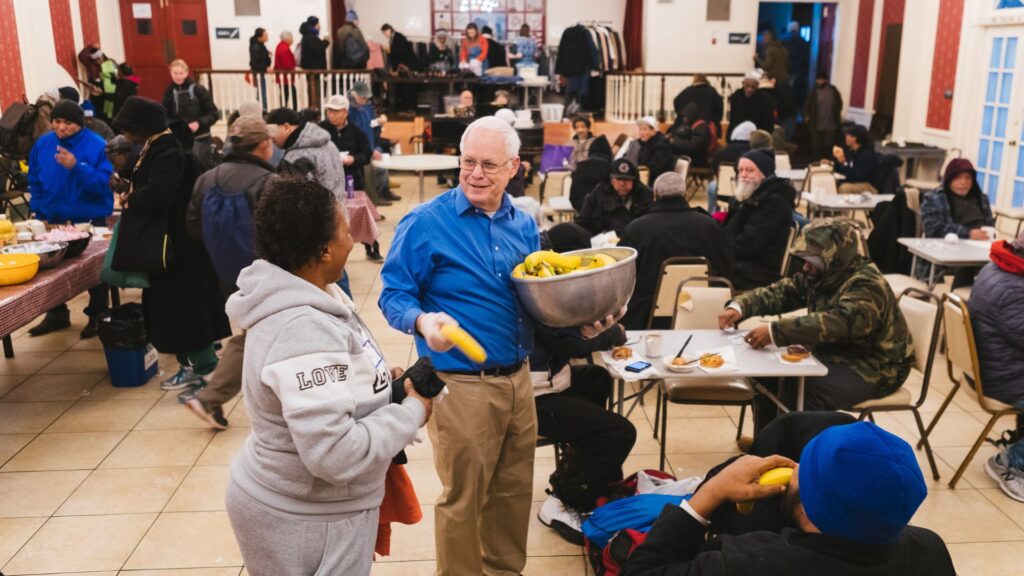
On Sunday mornings since 1981 our neighbors experiencing homelessness have been invited to join volunteers in the Radcliffe Room of NYAPC for refreshments, conversation, and hymn singing. During their visit, guests, frequently numbering over 100, may acquire clothing from our clothing closet, use the church restrooms, and obtain transportation passes. They are also encouraged to join in serving the food and drink, welcoming others into conversation, and joining in song.
1981 - TodayMcClendon Center: Forty Years and Going Strong
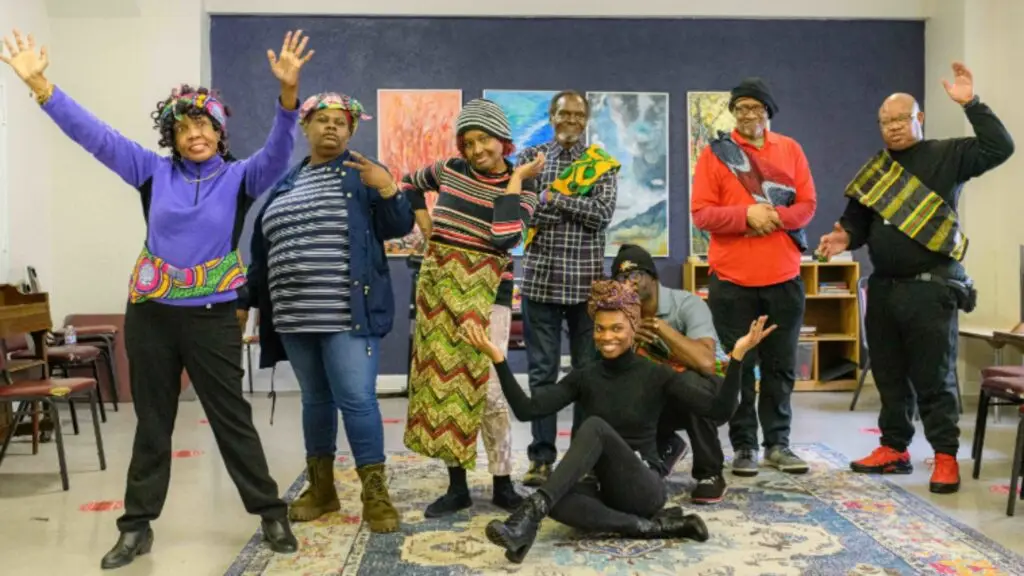
For nearly 50 years the McClendon Center has served as a professional socialization program for poor people affected by mental illness in Washington, DC. The Center provides therapy, skills training, arts instruction, and peer conversations to 50 individuals five days a week. The program has earned accolades from mental health professionals in the City.
1980 - TodayBeyond City and Nation
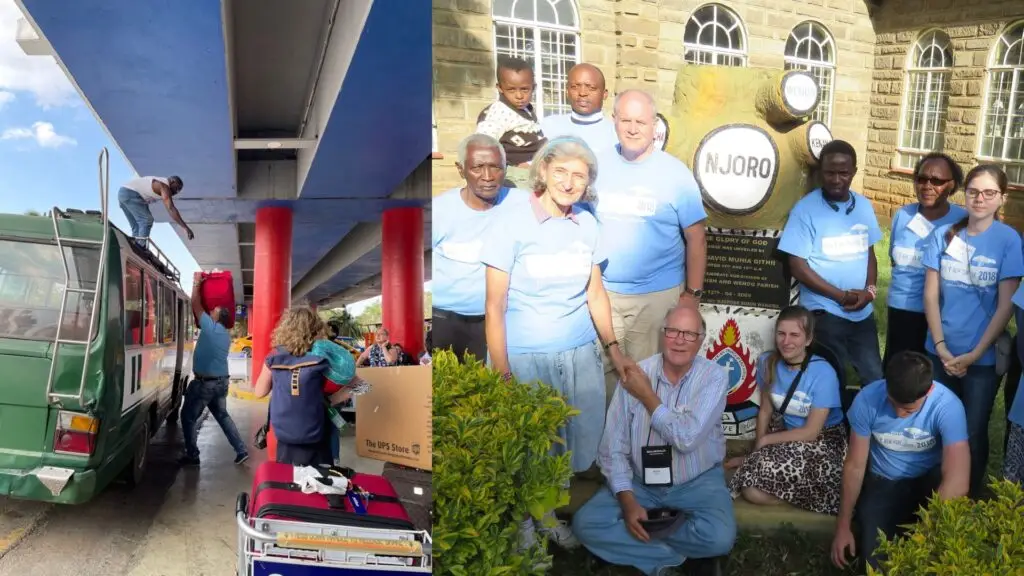
Each year for over 25 years we have visited and have hosted visitors from the First Presbyterian-Reformed Church of Havana. The exchanges build spiritual, cultural and political understanding and allow us to provide desperately needed financial support and deliver basic supplies to our Cuban friends.
For over 15 years, alongside the Njoro Presbyterian Church of East Africa, we have provided meals, clothing, educational supplies and helped pay school fees so 35 orphan and vulnerable children will receive the education needed to have a fulfilling future. The program has supported occasional visits of NYAPC members to Kenya and return visits by our Njoro brothers and sisters to Washington.
1999 & 2007 - TodayDowntown Day Services Center
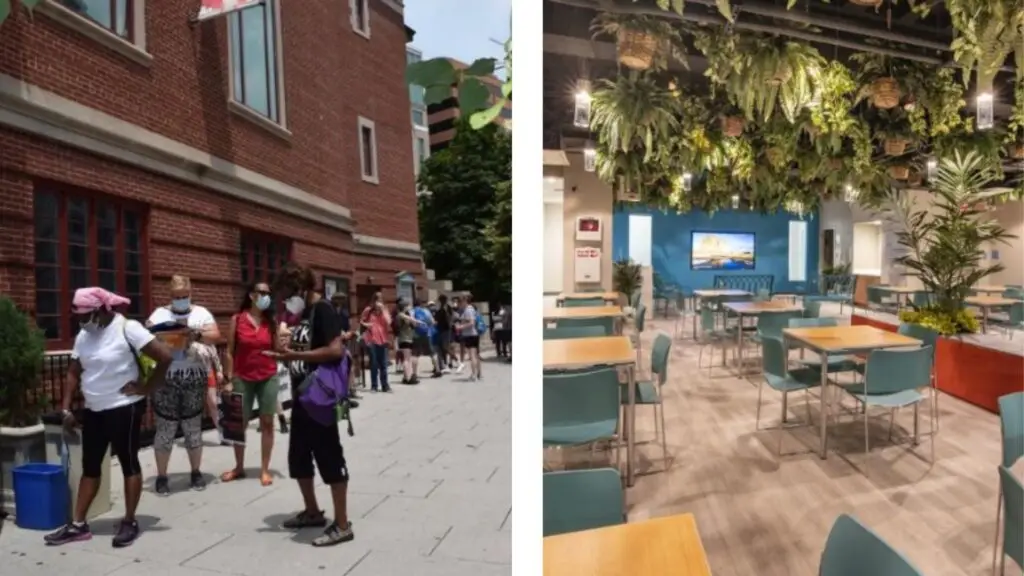
In 2019, NYAPC entered into an agreement with the City and the Downtown Business Improvement District to host a Downtown Day Services Centers for the City’s residents experiencing homelessness in the wholly renovated church basement. The Center provides a multitude of services at a single location such as applying for housing, obtaining IDs, and applying for other services. Also available are restrooms, showers, laundry facilities, phone charging, emergency clothing, and lunch. In winter months, the Center has used a first-floor room in the church as a Warming Center for their clients.
2019 - TodayHeart and Mind: McClendon Scholar Program
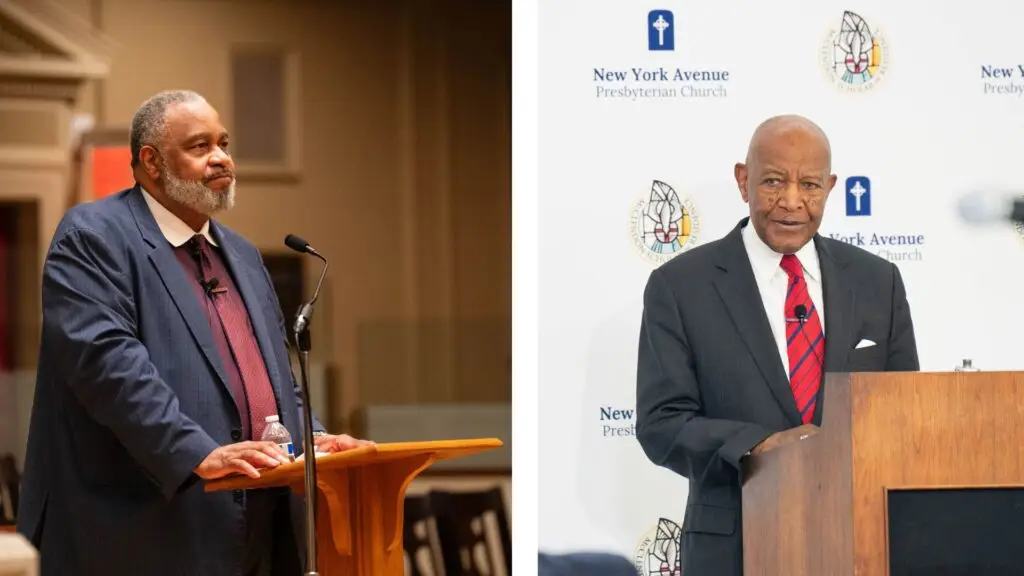
The McClendon Scholar program has, since 2006, brought theologians, ethicists, Biblical scholars, pastors and political leaders to share their insights, witness and fellowship with NYAPC and the larger Washington and national faith community. Such luminaries as James Cone, Bryan Stevenson, Ellen Davis, Chris Coons, E.J. Dionne, Taylor Branch, Walter Brueggemann, James Forman, Jr., Raphael Warnock, Kelly Brown Douglas, and William Barber have graced our program and helped us explore the places where faith and public policy meet.
2006 - TodayProphetic Witness
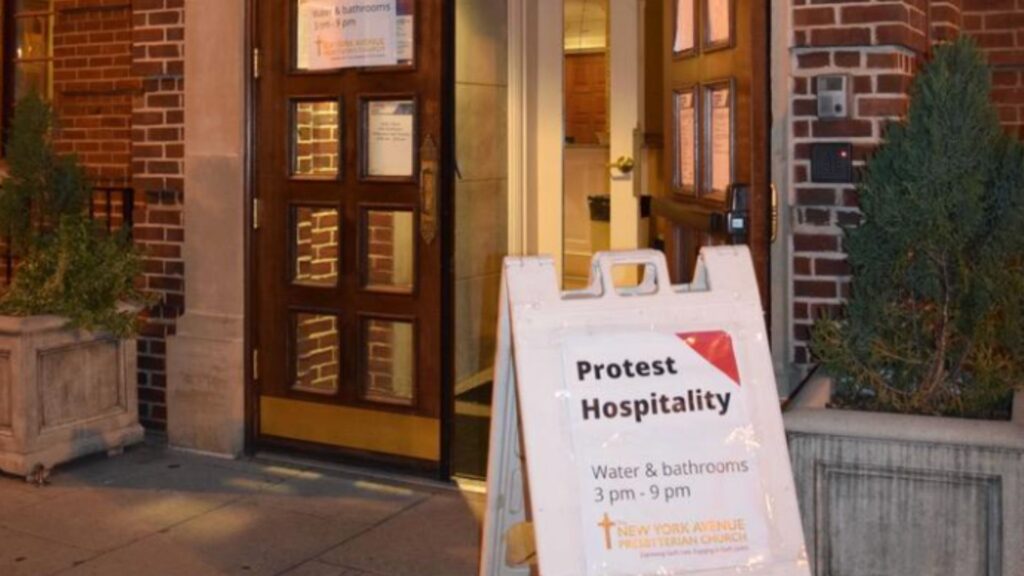
NYAPC has maintained a tradition of hospitality and prophetic Witness that began with the 1963 March on Washington, continued with hosting other civil rights and anti-war protests, and continues to this moment with recent Inauguration open houses (2009, 2013, 2017 and 2020) and welcoming stations at the church for the Women’s March in 2017, the March for our Lives in 2019, and 2020 BLM protest hospitality.
1963-TodayFirst Called and Installed Woman Senior Pastor
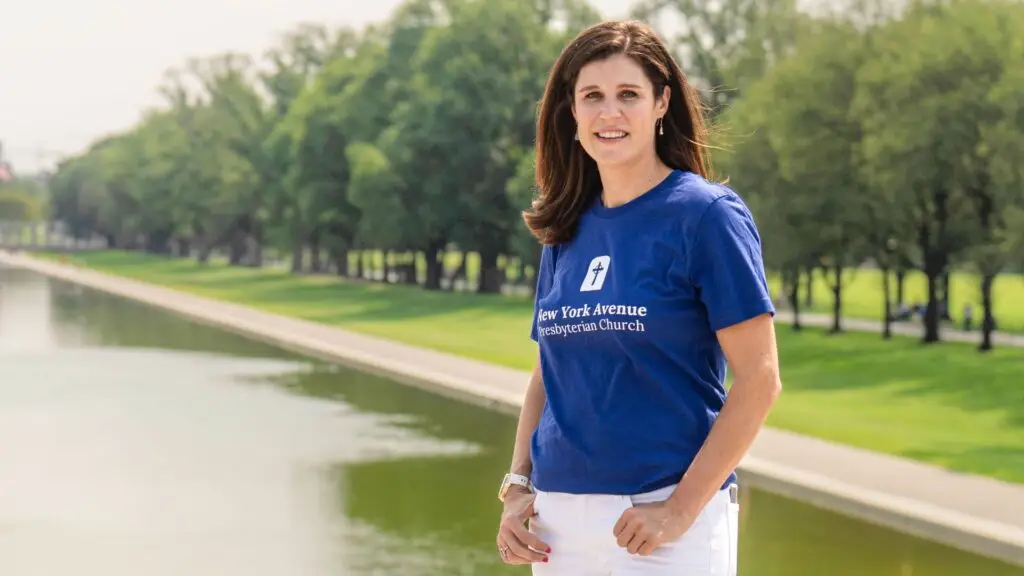
In 2022 NYAPC called and installed The Rev. Dr. Sarah Johnson as the first installed woman Senior Pastor.
2022No posts found!
